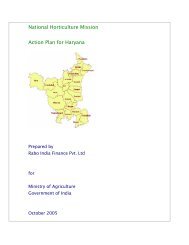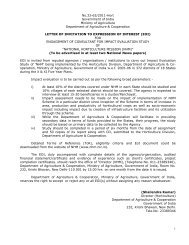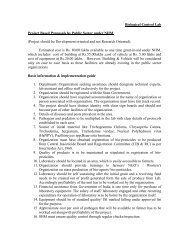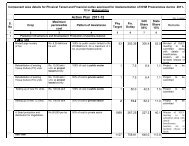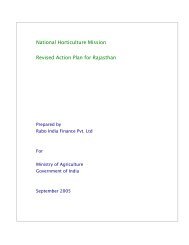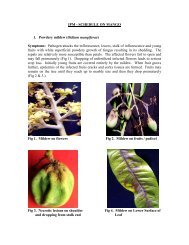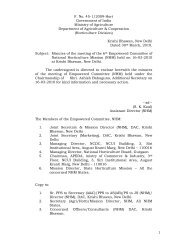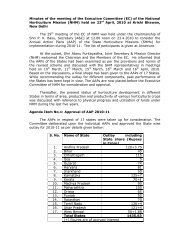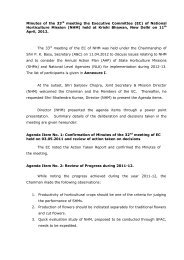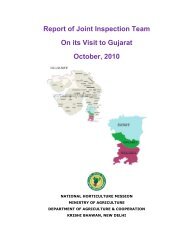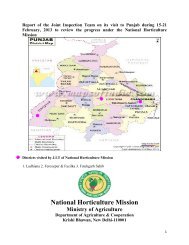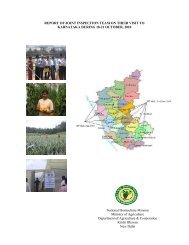Integrated Pest Management Schedule for Vegetables - National ...
Integrated Pest Management Schedule for Vegetables - National ...
Integrated Pest Management Schedule for Vegetables - National ...
You also want an ePaper? Increase the reach of your titles
YUMPU automatically turns print PDFs into web optimized ePapers that Google loves.
the plant. The disease is caused by phytoplasma likeorganism and transmitted by leafhoppers.observed in first fruiting. Fruit rot extends to the seedcavity making it internally seed borne pathogen.Die back in chilliChoanephora on stem & leaf rotPhytoplasmal leaf de<strong>for</strong>mation<strong>Management</strong>Periodical spray of systemic insecticides isnecessary to control vector.Uproot the severely infected plants and burn justbe<strong>for</strong>e starting of spray schedule.Avoid early transplanting be<strong>for</strong>e third week ofAugust to escape leafhopper population.During first sign of initial infection, sprayTetracycline @ 100 ppm twice at 10-12 days intervalto check the multiplication of phytoplasma in thehost tissue.CHILLI/CAPSICUMDieback and Anthracnose (Choanephoracapsici, Colletotrichum capsici)SymptomsDisease initiate on tender twigs from the apical top ofthe plant as necrosis and withering. It progresses fromtip to downward. Choanephora capsici rotted leavesand twigs clearly show black sporangial structure overit. The twigs are water soaked, brown and dieback asthe infection spreads downward. Later on infectedtwigs developed several minute acervuli. Symptomson red fruits are more commonly observed than greenfruits. Small, irregular, sunken, light brown lesions wereobserved on mature fruit. Most often they are coalescedand become papery on green fruits. Apparently fruitslooking healthy during harvest may show the symptomsof diseases during drying. Maximum infection was<strong>Management</strong>Anthracnose infected chillies and close upDisease free seeds should be collected fromhealthy fruits.Screening of diseased fruits must be done afterdrying of the fruits.Seeds should be treated with Carbendazim@ 0.25% during sowing.Seedling should be sprayed by Carbendazim@ 0.1% be<strong>for</strong>e transplanting.Cut the rotting twigs along with healthy part andburn it.Foliar spray of Copper Oxychloride @ 0.3% followedby Carbendazim @ 0.1% at flowering stage.Avoid apical injury during transplanting and alsoat flowering stage.Collect all the green fruits of first setting andconsume it. Do not keep these fruits <strong>for</strong> seedpurpose.Bacterial Leaf SpotSymptomsThe disease is common from nursery stage tovegetative stage of plant growth. Symptoms mayappear any time up to first flowering. Very small,DISEASE MANAGEMENT/CHILLI/CAPSICUM31



